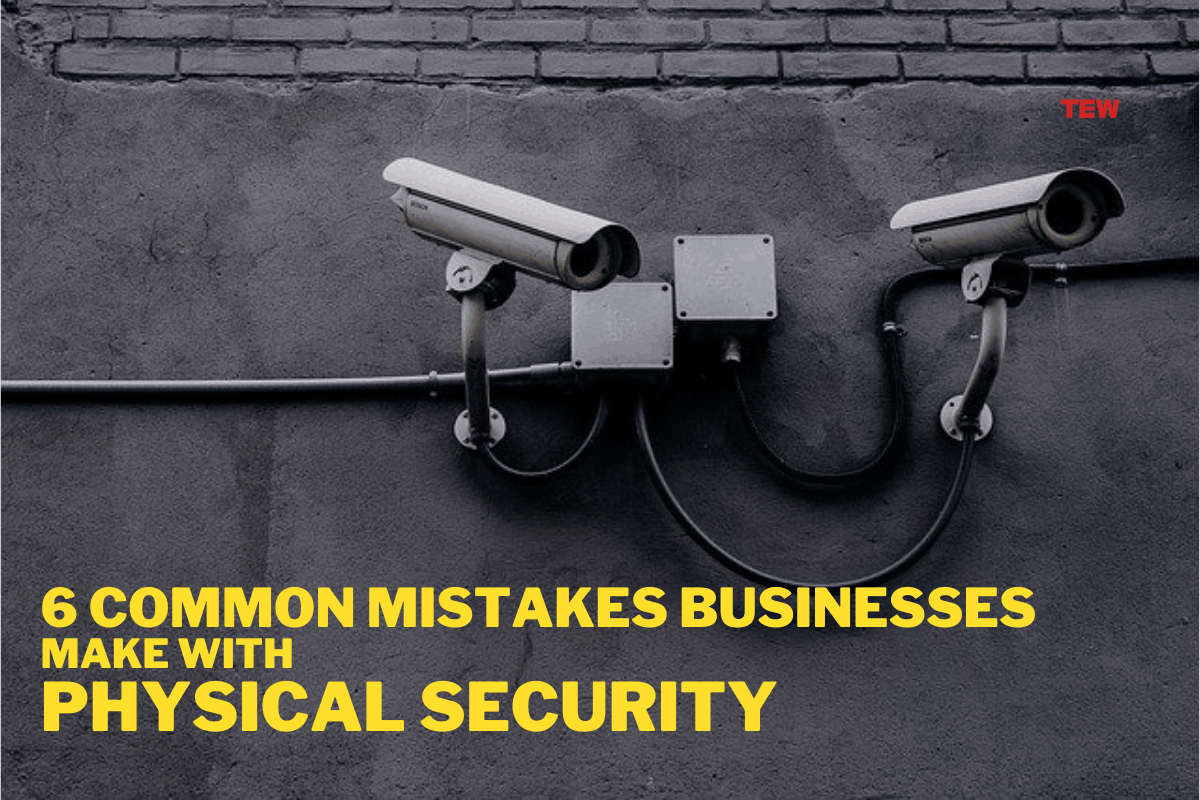Setting your sights on cybersecurity as a priority for protecting your business assets is undeniably essential in the modern era.
However, this can lead to organizations of all sizes neglecting the physical security of their premises, or making false assumptions about where to focus their efforts.
Many companies, such as Patriots Security, offer excellent physical security measures to deter, detect, and respond to these threats. They play a vital role in protecting businesses from financial losses, legal liability, and loss of reputation.
It’s better to learn from the mistakes of others than making them yourself, so here are the main missteps that businesses make from a physical security perspective to give you the upper hand.
Mistake 1: Choosing Form over Function
You might think that by keeping security systems out of view of the public, you are maintaining the aesthetic appeal of your premises while still keeping it safe from thieves.
However, one of the main reasons that assets like security cameras and alarm solutions are useful is because they deter malicious third parties from targeting your premises in the first place.
Night vision allows security cameras to record footage in low to no-light conditions. It can be vital for businesses that operate in areas with limited lighting or are concerned about break-ins at night.
On the other hand, motion detection allows security cameras to record footage when they detect movement automatically. It can help reduce the amount of footage you must review while keeping you updated on suspicious activity on your premises.
So rather than trying to disguise this equipment, make sure that it is plainly visible. You can still have inconspicuous security solutions in place alongside them, but don’t let your eye for architectural design get in the way of practicality.
Mistake 2: Taking a One-Size-Fits-All Approach
If you aren’t taking a tiered approach to security, then valuable resources could be left vulnerable. It’s better to have multiple levels of security depending on the importance of the asset that’s being protected.
By having multiple levels of security, intruders get discouraged from trying to access your assets. If one level of security is compromised, the other levels will still provide a barrier. It’s highly unlikely that an attacker will continue bypassing all the security measures in place without getting caught.
For example, you might allow members of the public into your reception area without any additional checks, but prevent them from entering other areas through the use of things like biometric scanning for access control.
Mistake 3: Focusing on the Front Door…and Ignoring other Potential Entrances
Every business premises will have multiple points of entry, and they need to be treated equally in terms of security.
Installing maglock kits to orchestrate access to rear entrances, adding locks to windows to avoid this being a weak link, and ensuring that surveillance coverage encompasses all areas that could allow unwanted ingress, is vital.

Mistake 4: Failing to Train Employees Appropriately
Even if you’ve got all the security tech and systems in place, they won’t work as intended unless the team members who use your premises from day to day are clued up on how to harness them.
Establishing a training program to go over policies and best practices, and also delivering documentation that every employee can refer to if they’ve got a question or concern, is wise.
In addition, adhering to security protocols and using the systems has to be universal; it can’t be one rule for the entry level employees, and another rule for those higher up the ladder.
Mistake 5: Going too Far with Physical Security
While investing in physical security systems, solutions and training will benefit your business up to a point, it is also possible to push this too far, leaving you with additional costs and no actual benefits to show for your spending.
It’s a case of working out exactly what your organization needs in terms of physical security, and providing this as efficiently as possible.
The best way to do this is to consult with an expert in on-premises security so you can get advice about where you are vulnerable, and what steps you should take to deflect the dangers that are out there without wasting a cent.
A security expert can help identify the potential security risks to your organization, both physical and digital. They can also help you assess the likelihood and impact of these risks.
When choosing one as a partner, it’s essential to consider their experience and certifications. You must ensure they have the skills and knowledge necessary to meet your needs.
Mistake 6: Forgetting about the Overlap between the Physical and the Digital
It’s wrong to think of your business’ physical security and digital security as two entirely separate entities. In reality there is quite a bit of crossover between them, and you can’t take chances where vital tech resources are at stake.
For example, if a person can gain physical access to your premises, then they might be capable of compromising your internal network, whether via a wired port or a wireless hotspot. Thus considering where these resources are placed on-site is necessary as part of physical security.
Have a comprehensive security strategy that addresses both physical and digital security. It should include risk assessment and asset categories for priority protection.
Once you have identified the risks, you must implement the appropriate controls to mitigate them.
Above all, the whole organization must be on board. Train team members in security best practices like using strong passwords, identifying phishing emails, and protecting their personal information.
The Bottom Line:
There’s always the potential for your business to fall victim to a breach, whether to its physical premises or its digital assets. What you must do is mount an adequate and cost-effective defense, and also prepare to deal with the fallout of a successful theft or incursion so that operational continuity is preserved.





